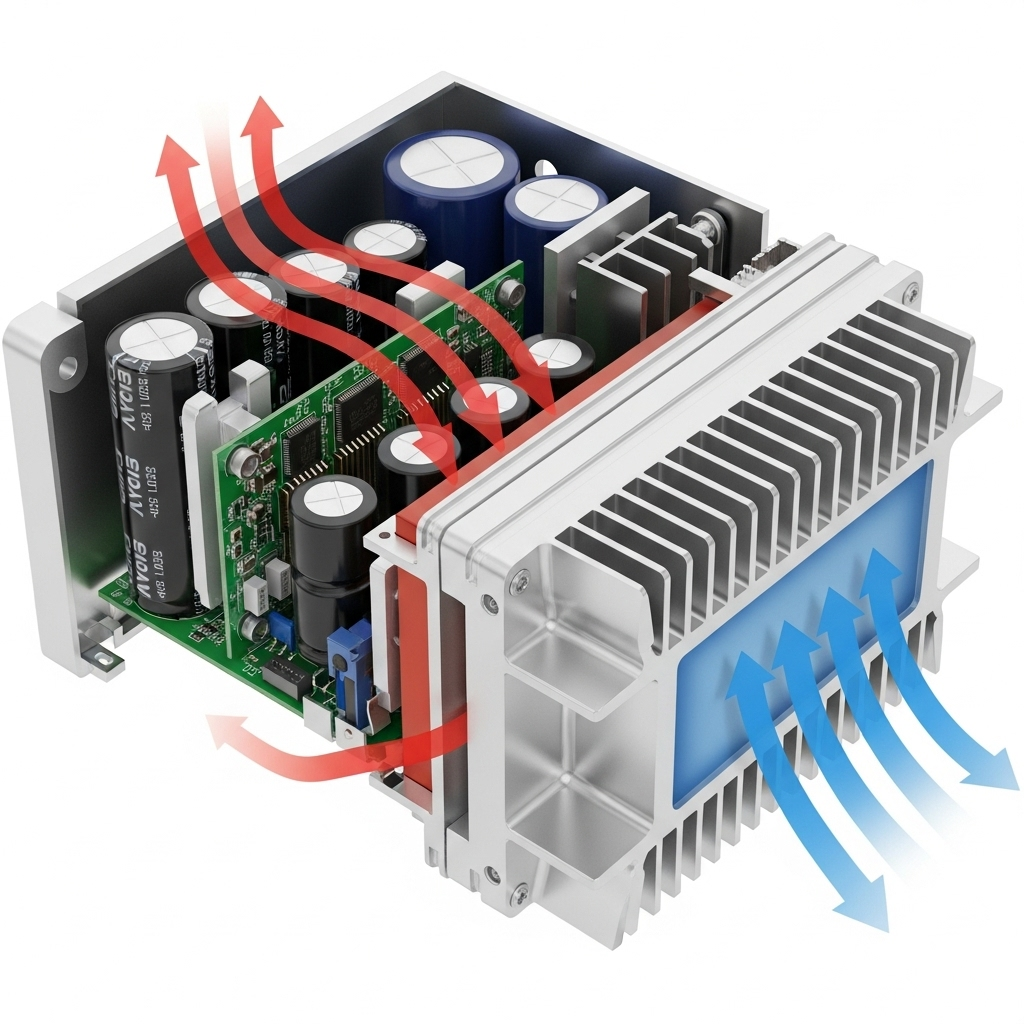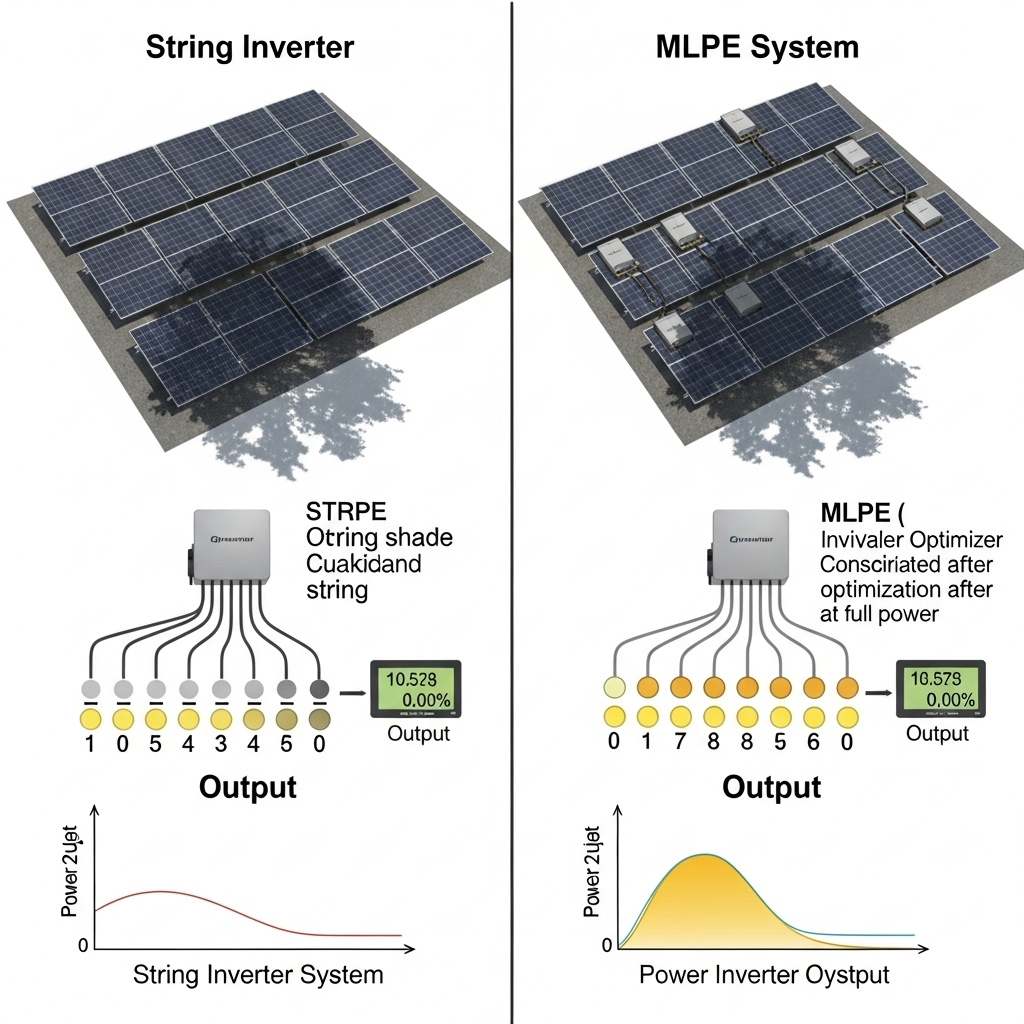A solar inverter's performance is closely tied to its operating temperature. When an inverter gets too hot, it intentionally reduces its power output to protect its internal components. This self-preservation mechanism is known as thermal derating. While most manufacturers provide a standard derating curve, these are often based on laboratory conditions. In reality, climate-specific factors like humidity, solar irradiance, and altitude dramatically influence an inverter's thermal behavior, making generic curves a source of inaccurate performance estimates.
Moving beyond these generic models to data-backed, climate-specific derating curves is essential for accurate system design, reliable energy yield predictions, and maximizing the return on your solar investment. This approach replaces assumptions with real-world data, ensuring your system is optimized for its unique environment.
Why Generic Derating Curves Fall Short
Standard derating curves provided on an inverter's datasheet offer a baseline for performance but often fail to capture the complexities of real-world operating conditions. They provide a simplified view that can lead to miscalculations in energy production.
The Limitations of Standard Datasheets
Manufacturer datasheets typically specify an inverter's performance under controlled, ideal circumstances. However, the actual operating environment is rarely ideal. Factors like direct sun exposure, poor ventilation, and high ambient temperatures can cause an inverter to heat up far beyond datasheet assumptions. This discrepancy means a system designed using only generic curves may underperform, especially during the hottest parts of the day or year when energy production should be at its peak. The controlled reduction of power, or derating, is a protective measure, but relying on generic estimates for it can be misleading.
Overlooking Key Climate Variables
A simple ambient temperature reading doesn't tell the whole story. Several climate variables interact to affect how an inverter dissipates heat:
- Humidity: High humidity reduces the air's ability to absorb moisture, which hampers evaporative cooling and can lead to condensation inside the unit. This makes it harder for the inverter to cool itself, even at moderate temperatures.
- Solar Irradiance: Intense sunlight not only increases the energy flowing from the panels but also directly heats the inverter's enclosure, adding to the thermal load.
- Air Density (Altitude): At higher altitudes, the air is less dense. Thinner air is less effective at transferring heat away from the inverter's heat sinks, causing derating to occur at lower ambient temperatures.
- Wind Speed: Airflow is critical for cooling. A location with consistent breezes will help dissipate heat more effectively than a stagnant, sheltered location.
Building Climate-Specific Derating Models
To create truly accurate performance models, we must move from generalized curves to data-driven, climate-specific ones. This involves leveraging large datasets and sophisticated analysis to understand how inverters perform in specific environments.
The Role of Big Data and Analysis
By collecting and analyzing performance data from thousands of installed PV systems across various climate zones, it's possible to build highly accurate predictive models. Initiatives like the PV Fleet Performance Data Initiative by the U.S. Department of Energy and NREL are central to this effort, creating benchmarks for performance and degradation. This wealth of data allows for the identification of subtle patterns between environmental conditions and inverter efficiency that would be impossible to determine otherwise. According to a report from the International Energy Agency's Photovoltaic Power Systems Programme (IEA-PVPS), standardizing data handling is crucial for enhancing the reliability of PV systems through such data-driven decisions.
Key Data Inputs for Accurate Modeling
Developing a robust, climate-specific derating curve requires a comprehensive set of inputs. Beyond simple temperature, these models incorporate:
- Historical Ambient Temperature: Hourly data over several years to capture typical and extreme conditions.
- Solar Irradiance (GHI): Measures the intensity of sunlight hitting the location.
- Relative Humidity: Crucial for understanding cooling efficiency in humid climates.
- Wind Speed and Direction: Determines the effectiveness of convective cooling.
- Altitude: To adjust for changes in air density.
By processing these inputs, a model can generate a derating curve that accurately reflects the performance limitations for an inverter in a specific climate.
Derating Curves in Action: A Tale of Two Climates
The impact of climate on inverter derating becomes clear when comparing two distinct environments: a hot, arid desert and a hot, humid coastal region. An inverter that performs well in one may struggle in the other.

Case 1: Hot and Arid Climate (e.g., Arizona, USA)
In a desert environment, the primary challenge is extreme ambient temperature combined with high solar irradiance. The low humidity allows for relatively efficient heat dissipation, but the sheer intensity of the heat means derating is almost inevitable during peak afternoon hours. The derating curve for this climate will typically show a sharp drop in power output once the ambient temperature exceeds a critical threshold, often around 45-50°C.
Case 2: Hot and Humid Climate (e.g., Florida, USA)
In a hot and humid climate, the ambient temperature may not be as extreme as in a desert, but the high moisture content in the air significantly impairs the inverter's ability to cool itself. The derating curve here may be less steep, but the power reduction will begin at a lower ambient temperature and last for a longer duration throughout the day. Corrosion from moisture is also a long-term concern in these environments.
| Climate Factor | Hot & Arid (Desert) | Hot & Humid (Coastal) |
|---|---|---|
| Primary Challenge | Extreme Ambient Temperature | High Humidity & Sustained Heat |
| Derating Onset | Higher Temperature, Sharp Onset | Lower Temperature, Gradual Onset |
| Derating Profile | Steep, concentrated in peak heat | Gradual, prolonged throughout the day |
| Cooling Efficiency | Relatively high due to dry air | Low due to moist air |
| Design Implication | Focus on ventilation and shading | Focus on moisture protection and airflow |
Practical Applications for System Designers and Owners
Using climate-specific derating curves offers tangible benefits, moving solar system design from a generalized practice to a precise science. This data-driven approach leads to better financial outcomes and more reliable systems.
Improving Energy Yield Predictions
Accurate derating models provide a much clearer picture of how a solar energy system will perform over its lifetime. This allows for more realistic financial modeling, preventing the overestimation of energy production and revenue. When you know precisely how an inverter will behave in the local climate, you can set accurate expectations for system owners and financiers.
Optimizing Inverter Sizing and Selection
With precise derating data, you can make smarter decisions about inverter sizing. In some climates, it might be more cost-effective to select a slightly oversized inverter to compensate for expected power losses. In others, a standard size might be sufficient. This data helps optimize the DC-to-AC ratio (or inverter loading ratio), a key design parameter that balances cost and performance. As noted by the International Energy Agency, system design choices have a significant impact on overall output.
Enhancing System Reliability
Understanding the thermal stress an inverter will face allows for better thermal management design. This could involve ensuring better ventilation, adding a shade cover, or selecting an inverter with a more robust cooling system. By mitigating heat-related stress, you can extend the inverter's lifespan and improve the reliability of the entire system. A healthy inverter is fundamental to achieving the ultimate performance in a solar storage system, as it ensures consistent and efficient power conversion over decades.
A Forward Look: The Future of Inverter Design
The insights gained from climate-specific data are actively shaping the next generation of solar inverters. Manufacturers are developing more resilient hardware with advanced thermal management systems. Innovations include the use of new semiconductor materials like silicon carbide (SiC) that operate more efficiently at higher temperatures, and intelligent, variable-speed fans that provide cooling only when needed. Furthermore, the development of grid-forming inverters is paving the way for more resilient microgrids that can operate independently during grid outages, a capability demonstrated by research from the National Renewable Energy Laboratory.
Frequently Asked Questions
What is solar inverter derating?
Solar inverter derating is the intentional reduction of power output by the inverter to protect its internal electronic components from damage due to excessive heat. This process is automatically triggered when internal temperatures exceed a safe operating limit.
How does humidity affect inverter derating?
High humidity reduces the efficiency of the surrounding air to dissipate heat. The moisture-laden air cannot absorb heat as effectively as dry air, causing the inverter's internal temperature to rise and trigger derating sooner, even at moderate ambient temperatures.
Can I find a derating curve for my specific city?
While publicly available derating curves for specific cities are not common, solar design software and professional installers often use climate data and advanced modeling to generate these curves for precise system planning. They integrate historical weather data to simulate inverter performance accurately for a given location.
Does derating damage the solar inverter?
No, derating is a protective safety feature. It is designed to prevent damage by reducing thermal stress on the components. However, frequent or prolonged derating indicates that the inverter is consistently operating in high-temperature conditions, which can accelerate the aging of its components and shorten its overall lifespan.
How does proper thermal design impact the overall performance of a solar storage system?
Proper thermal design is critical. It ensures the inverter operates within its optimal temperature range, maximizing power conversion efficiency and preventing losses from derating. A well-cooled inverter is more reliable and has a longer lifespan, which directly translates to better long-term energy production and financial returns for the entire solar and storage system.





Leave a comment
All comments are moderated before being published.
This site is protected by hCaptcha and the hCaptcha Privacy Policy and Terms of Service apply.